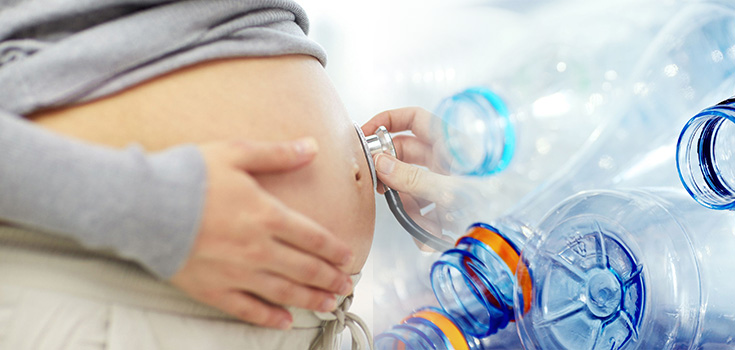Prenatal Exposure to BPA Linked to Wheezing, Asthma in Children

A significant study involving over 3,000 mother-child pairs across 6 European countries has revealed once again a potential link between prenatal exposure to bisphenol A (BPA) and an increased risk of asthma in school-age children.
Bisphenol A, also known as BPA is a chemical that is commonly found in a large number of consumer products including water bottles and food containers. In fact, in the United States, this dangerous chemical is found in more than 90% of the population, which points to widespread exposure. Turn out, early exposure to BPA while pregnant may be causing wheezing and asthma in children.
The study, published in the journal Environment International, found a notable correlation between BPA levels in mothers’ urine and instances of asthma and wheezing in female children, but not in males.
Dr. Leonardo Trasande, the study’s lead author and director of environmental pediatrics at NYU Langone Health, highlighted the importance of this finding. The study, conducted between 1999 and 2010, detected BPA in 90% of the maternal urine samples. During this period, BPA was a common component in various products.
“We believe that the effect may be due to the fact that bisphenols can cross the placental barrier and interfere with the child’s respiratory and immune systems during the developmental phase,” said first author Alicia Abellán, a postdoctoral researcher at Barcelona Institute for Global Health, in a statement.
The children, born to mothers with detectable BPA levels, underwent lung function tests between the ages of 7 and 11. Mothers also reported on their children’s respiratory health. The study uniquely identified BPA as the sole bisphenol linked to respiratory issues like asthma and wheezing during the children’s elementary school years.
“When a baby is growing in utero, the lung buds are shaped by a host of factors of which sex hormones are one, so if there’s an imbalance of sex hormones induced, for example, by an exogenous estrogen like BPA, that could be part of the story,” Trasande explained.
Interestingly, the study also explored bisphenol F (BPF) and bisphenol S (BPS), marketed as safer “BPA-free” alternatives. However, these were found in minimal levels in urine samples and showed no consistent respiratory impact, likely due to their limited use during the study period.
Recent animal studies have indicated similar prenatal developmental issues with BPS, including embryonic development problems, premature birth, thyroid hormone disruptions, and heart arrhythmias. This emerging evidence suggests a need for further scrutiny of BPA and its alternatives in relation to children’s respiratory health.
Not the First Time a BPA-Asthma Connection Was Made
Results from other research from 2011 indicated that children at six months were twice as likely to have a wheezing episode if their mothers had elevated levels of BPA during pregnancy as those children whose mothers levels were lower. As the children aged, the effects seemed to diminish.
Timing of Exposure Important
When researchers investigated urine concentrations of BPA at different times in the pregnancy, it was discovered that pregnant women exposed at 16 weeks led to a greater change of children wheezing than those exposed at 26 weeks. Exposure early in pregnancy appears to be worse than later exposure.
BPA Use
BPA has been around for over 40 years and has been challenged since its arrival on the scene. Many manufacturers of baby bottles, cups and formula cans no longer use BPA in their manufacturing process, and according to the United States Department of Health, most children’s toys no longer contain BPA. In fact, BPA has been banned in baby bottles and declared a toxic substance in Canada.

It is very difficult to understand why the FDA would reject the ban! Is it possible a special interest group, i.e. powerful companies that manufacture said products, put their interests (MONEY) before our safety, exerted pressure on the FDA? I'm just saying!?!!?